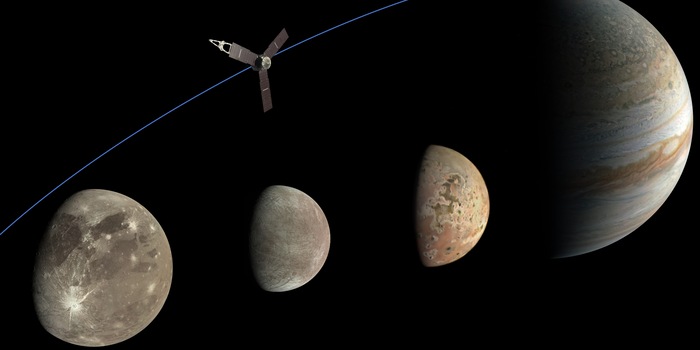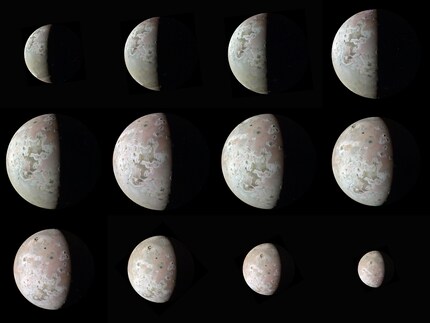
Juno space probe: Jupiter's moon Io on sale
Io, the innermost of Jupiter's four large satellites, is only slightly larger than our moon. Instead of a dead cratered desert like its Earth companion, Io offers a constantly changing landscape characterised by active volcanoes.
There are no impact craters on Io; the entire surface is extremely young in geological terms. At least 200 volcanoes are active on Io at any one time, significantly more than on Earth. The volcanoes bring basaltic lava to the surface at high temperatures that are only reached on Earth in exceptional cases. The highest lava temperatures measured on Io to date have reached up to 1500 degrees Celsius - terrestrial basalts are usually between 1100 and 1200 degrees Celsius.
Juno's next flyby of Io will take place on 15 October 2023, when the probe will come within 11,600 kilometres of Io. At the end of the year, a passage at a distance of only 1500 kilometres is planned - then there should be ultra-sharp images.
Spectrum of Science
We are partners of Spektrum der Wissenschaft and want to make well-founded information more accessible to you. Follow Spektrum der Wissenschaft if you like the articles.
[[small:]]
Cover image: NASA/JPL-Caltech/SwRI/MSSS
Experts from science and research report on the latest findings in their fields – competent, authentic and comprehensible.
From the latest iPhone to the return of 80s fashion. The editorial team will help you make sense of it all.
Show all